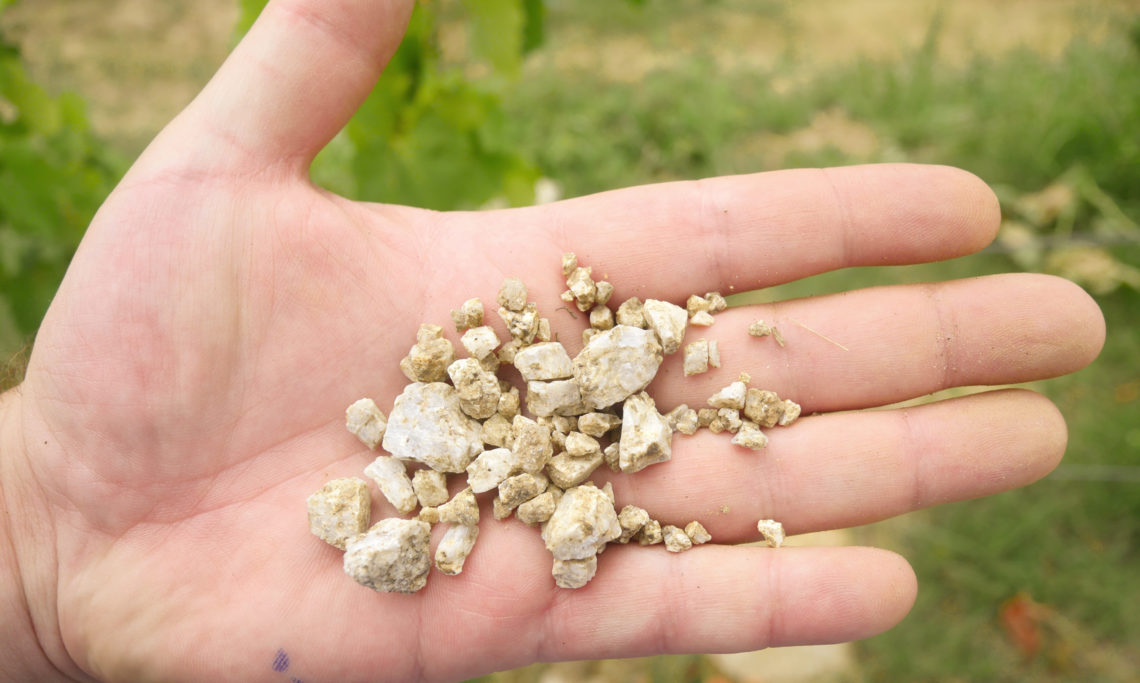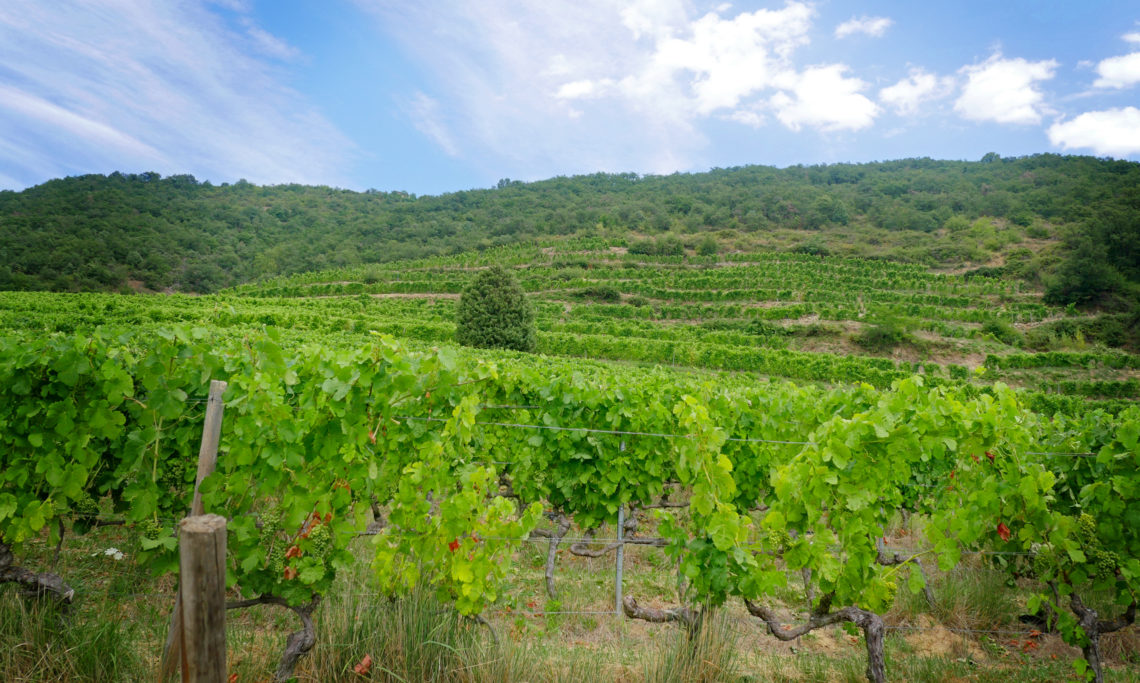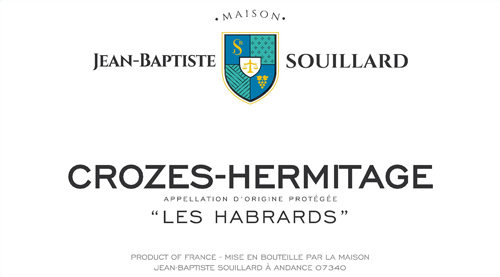Crozes-Hermitage Les Habrards
At a Glance
- Size: 0.10 ha (0.25 ac)
- Variety: Syrah
- Vine Age: Planted between the 1960s and the early 2000s
- Terroir: On a very steep, terraced, west-facing slope, 200 m elevation, deep silty soil on (blue!) granite.
- Viticulture: Sustainable
- Vinification: 40-100% whole-cluster, 2-3-week ambient yeast fermentation and maceration with pump-overs, aged for 13-18 months in used barrels, no fining or filtration, minimal SO2 added during vinification and adjusted after if needed.
Additional Info
Site: Les Habrards is located in and overlooks the village of Gervans. The slope is very steep and terraced. It faces directly west, towards the Rhône river. The unique western exposition results in a different quality of light and moisture at this site. The vineyard is at approximately 200-meters elevation.
Geology: Soil maps indicate that the majority of the vineyard is planted on surficial deposits of calcareous, wind-blown loess. In addition to the loess and other re-worked sediments, we observed the biotite granite bedrock with large feldspar crystals. The granite here is one of the rare exceptions when the term "blue granite" is an accurate description of the rock; minor impurities in the quartz crystals within the granite make it appear light grayish-blue.
Soils: At least two major soil types dominate the vineyard, including deep, yellow-brown, silty-sandy loess soils, and deep, silty to sandy decomposed granite soils.
Parcel: Jean-Baptiste’s parcel lies entirely on the granitic portion of the vineyard, and the soils are, therefore, more shallow, acidic, and rocky (stones of decomposed granite) in comparison to the portions of the vineyard planted on loess.
We are greatly indebted to Brenna Quigley for the geology and physical descriptions.
Wines
-
White
-
Rosé
-
Red
- Chatus
- Syrah
- Côte-Rôtie Côteaux de Bassenon
- Cornas Les Côtes
- Côte-Rôtie Tartaras
- Saint-Joseph
- Saint-Joseph Bergeron
- Saint-Joseph Château Morel
- Saint Joseph L'Echirol
- Saint-Joseph Janoune
- Crozes-Hermitage
- Crozes-Hermitage Les Baties
- Crozes-Hermitage Les Habrards
- Crozes-Hermitage Tenay
- Cornas Saint-Pierre



